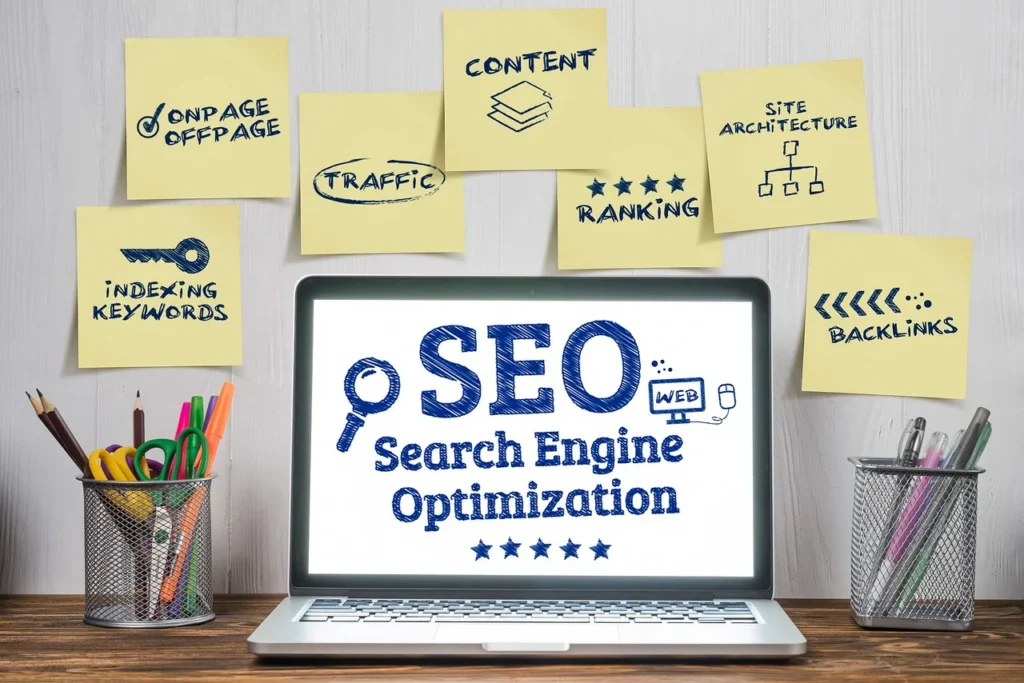
Table of Contents
- 1 The Power of SEO: Elevating Your Business to New Heights
- 2 Unlocking On-Page SEO
- 3 Understanding On-Page SEO
- 4 1. Finding Keywords: The Basis of On-Page SEO
- 5 2. High-Quality Content: The King of On-Page Optimization
- 6 3. Title Tags and Meta Descriptions: Crafting Click-Worthy Snippets
- 7 4. Header Tags: Organizing Content for Readability and SEO
- 8 5. URL Structure: Keep it Simple and Descriptive
- 9 6. Image Optimization: Improving Visual Appeal and SEO
- 10 7. Internal Linking: Building a Cohesive Web Structure
- 11 Conclusion
- 12 Unraveling the Magic of RankBrain: A Deep Dive into Google’s Search Revolution
The Power of SEO: Elevating Your Business to New Heights
Unlocking On-Page SEO
In the dynamic realm of digital marketing, On-Page SEO emerges as an indispensable component for achieving online success. Among the various facets of SEO, on-page optimization plays a pivotal role in enhancing a website’s visibility and search engine rankings. In this comprehensive guide, we’ll delve into the world of on-page SEO, exploring its importance, key elements, and best practices to help you navigate the intricate realm of search engine algorithms.
Understanding On-Page SEO
On-page SEO, often referred to as on-site SEO, involves optimizing individual web pages to rank higher and earn more relevant traffic in search engines. Unlike off-page SEO, which focuses on external factors like backlinks and social signals, on-page SEO revolves around optimizing content and HTML source code directly on the website.
1. Finding Keywords: The Basis of On-Page SEO
At the core of on page SEO lies the strategic use of keywords. Conducting thorough keyword research is the first step in optimizing your website for search engines. Identify keywords that align with your content and have significant search volumes. Tools like Google Keyword Planner, SEMrush, and Ahrefs can assist in discovering relevant keywords and assessing their competitiveness.
2. High-Quality Content: The King of On-Page Optimization
Creating valuable, relevant, and engaging content is essential for on page SEO success.
Search engines prefer content that genuinely helps users. Ensure your content is well-written, informative, and addresses the needs and queries of your target audience. Incorporate your chosen keywords naturally into the content while maintaining readability.
3. Title Tags and Meta Descriptions: Crafting Click-Worthy Snippets
Title tags and Meta descriptions are HTML elements that offer brief summaries of a webpage’s content. Crafting compelling title tags and Meta descriptions not only improves click-through rates but also contributes to search engine rankings. Include your target keywords naturally and make the snippet enticing for users to click on.
4. Header Tags: Organizing Content for Readability and SEO
Header tags (H1, H2, H3, etc.) help structure your content, making it more readable for both users and search engines. Use H1 tags for main headings and subsequent header tags to organize subheadings. Incorporate relevant keywords in header tags to signal the importance of specific sections to search engines.
5. URL Structure: Keep it Simple and Descriptive
A clean and descriptive URL structure enhances both user experience and SEO. Include relevant keywords in your URLs and avoid using generic strings of numbers or symbols. A well-optimized URL provides users and search engines with clear information about the content of the page.
6. Image Optimization: Improving Visual Appeal and SEO
Optimizing images is crucial for on-page SEO since they play a vital role in web content. Compress images to reduce file size, add descriptive alt text, and use relevant filenames. This not only improves page load times but also helps search engines understand the content of your images, contributing to better overall optimization.
7. Internal Linking: Building a Cohesive Web Structure
Internal linking involves connecting different pages within your website through hyperlinks. This practice helps distribute link equity, improves navigation for users, and enables search engines to crawl and index your site more effectively. Be strategic in your internal linking, using anchor text that provides context for the linked page.
Conclusion
Mastering on page SEO is a continuous process that requires a strategic approach and attention to detail. By incorporating the key elements discussed in this guide—keyword research, high-quality content, strategic HTML elements, and a focus on user experience—you can position your website for success in search engine rankings. Keep abreast of industry trends, algorithm updates, and user behavior to adapt your on-page SEO strategies and stay ahead in the dynamic world of digital marketing.